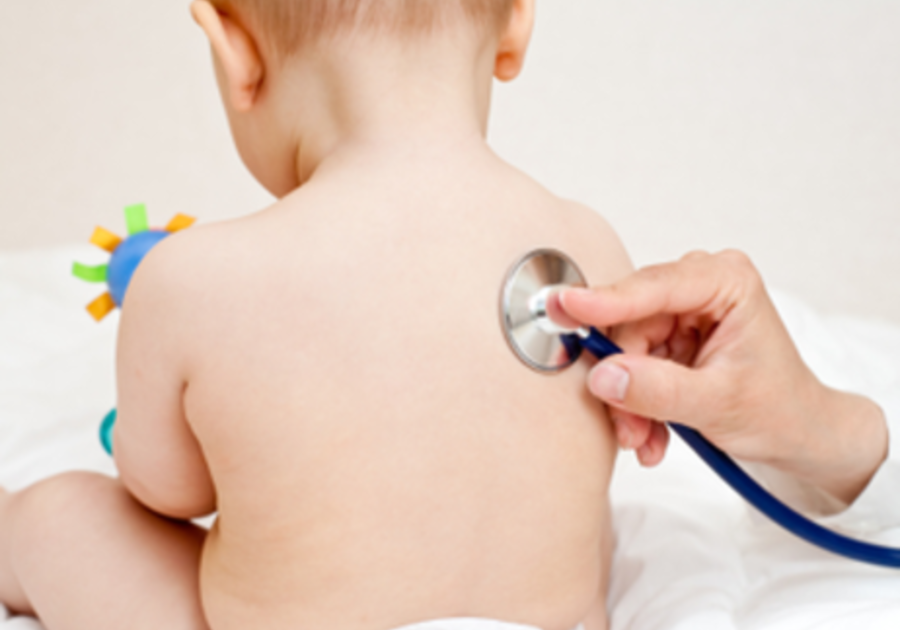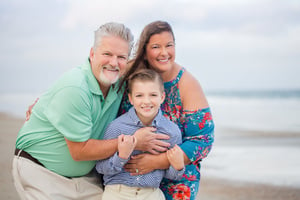We have 2 very healthy little girls and, in the past year and a half I have had to take them both to the ER in an ambulance. They were two very different scenarios that ended with the same diagnosis: febrile seizures. I'm going to start with the important stuff, but please scroll to the bottom of this article to hear our stories.
I am not a doctor. I am, however, a mom who has been through this with both of my girls. I've talked to half a dozen doctors, done countless hours of research and all of the answers are the same. The last ER pediatrician said to me, "These are so common. Why does no one warn parents?" So, here I am warning you.
Here is what YOU need to know:
What is a febrile seizure?
A febrile seizure is a fever-induced seizure. It has nothing to do with epilepsy and it has nothing to do with how high the fever gets. It has everything to do with how fast the temperature rises. (Both of my girls had their seizures at the low end of their fevers.) 1 in 20 children have them. Yes, it is that common!
Are there different types of febrile seizures?
Yes, in my research there are two types (and we have experienced both). During a "simple" febrile seizure, there are not many convulsions and the seizure may last anywhere from a few seconds up to 10 minutes. A "complex" febrile seizure lasts more than 15 minutes and there are more convulsions.
What does a febrile seizure look like?
The first sign of a seizure is usually a tightening of the muscles. I continually read that this can last no more than a few seconds. However, in both of our cases, this lasted longer. The child's eyes may roll back and parts of their body may convulse. This is not a grand mal seizure. In one of my daughters, just her eyebrows twitched. In the other, the convulsions seemed to travel through her body like a wave. They may drool and/or relieve themselves. There may also be hypoxia because they are not breathing productively. Their cheeks and lips will turn blue, but they are still breathing. This part is utterly terrifying. Both times, we had medical assistance at this point, so oxygen was used to correct the hypoxia, though we have been told that this will correct itself as the seizure ends. Once the seizure is done, there is usually excessive exhaustion and confusion. This can last up to an hour.
Does the child remember anything?
No. During a seizure, the memory part of the brain shuts off. They will have no idea what happened.
If I think my child is having one, WHAT DO I DO?
The absolute first thing to do is to get them safely on the ground away from any large objects that they could hit their head on. Also, if possible, turn their head to the side so they don't choke on any saliva or vomit. Take off any clothes if you can to cool them down.
Much documentation will tell you that if the seizure lasts more than 5 minutes, to call 911 or get to an emergency room at once. You're the parent. You decide what you can handle!
Can I prevent a febrile seizure?
YOU CAN'T. Often a febrile seizure is the first sign of a fever. No medicine will keep it away. Also, do NOT put cold water on your child. Making them shiver will cool their skin, but heat up their core, and we don't want to do that!
Can a febrile seizure cause permanent damage?
No. However, if it is a "complex" febrile seizure, doctors may want to run more tests just to make sure they have the right diagnosis.
Is there an age range where children are most vulnerable? Will they grow out of them?
Kids grow out of febrile seizures by the time they are 6. I have also read that the majority of them happen in toddlers ages 3 and under.
Will it happen again?
It can. Once a child has had a febrile seizure, they will be out of the woods for that particular illness in 24 hours. Once 24 hours has passed, they will not have another seizure with that particular illness. A third of all children who have a febrile seizure will have a second one in their lifetime. Half of the children who have a second will have a third.
Are febrile seizures hereditary?
We were told that because one child had one, it does not make our other children a higher risk. However, they do see it in generations. If you or your parents had them, then your children are at a higher risk. That said, there is no history in our family.
"This information on febrile seizures helped demystify a very frightening experience for family members. Although viral illnesses are typically the most common causative agents linked with febrile seizures, as health care providers, it is extremely important to rule out other more potentially dangerous conditions, such as epilepsy, bacterial meningitis, and bacteremia/sepsis." - Dr. Mark Garabedian, Pediatrician
Our stories
1. Our daughter had just turned 2 and one morning she woke up pulling her ear and she felt a little warm. I thought she had an earache. I gave her some ibuprofen and called the doctor to make an appointment to have her ear looked at. We cuddled on the couch and I could tell the medicine was working because she got up to play. A few minutes later I looked away from her just for a second. I turned back to find her on all fours, frozen in front of her dollhouse, and drooling. I stood her up. She tried to move, but couldn't. She looked at me, but wouldn't look at me. She was breathing, but otherwise completely unresponsive.
If there is anything our pediatrician has drilled into my brain it is that you don't need to worry unless your child doesn't seem to recognize you. THIS was that moment. A call to 911, a speeding ambulance, 2 10+ minute seizures back-to-back, a breathing mask, blood and urine tests, CAT scan, EEG, and an overnight stay later, they sent us home with the best news they could give us: our beautiful little girl had simply had a febrile seizure. That's all. Seriously. That's all. She had a "complex febrile seizure," which caused all of the extra drama. They had to be sure. Really sure.
2. Fast forward to this last week. We were on an airplane and the pilot had just announced we were started to descend. Here we come, Florida! Our one-year-old was sound asleep in my husband's arms and he said she suddenly shook 3 times. Her eyes were wide open, but looking up. Her mouth was open too. She was stiff and her eyebrows were twitching. We knew exactly what was happening: a febrile seizure. She was warm to the touch. She quickly became hypoxic (not getting enough oxygen) and her cheeks and lips turned purple. By this time, both a physician and nurse who were on the plane, were helping us. They got an oxygen mask on her and within seconds she was crying. You can't cry while you are having a seizure. This was good news. By the time we were on the ground, assessed by paramedics, and in the ambulance, she was herself. Exhausted and feverish, but herself. Hours later we were off on our vacation. Two days later, her fever broke and a rash showed up. Hello, Roseola! We now know that Roseola usually starts with a rapid temperature increase and is a major cause of febrile seizures!
"This article serves as a great tool for families to better understand febrile seizures." - Dr. Mark Garabedian, Pediatrician
*If you haven't signed up for the FREE Merrimack Valley Macaroni Kid newsletter to get all the weekly local events, now's the time! SUBSCRIBE NOW to the Merrimack Valley parent's go-to resource! Follow us on facebook



